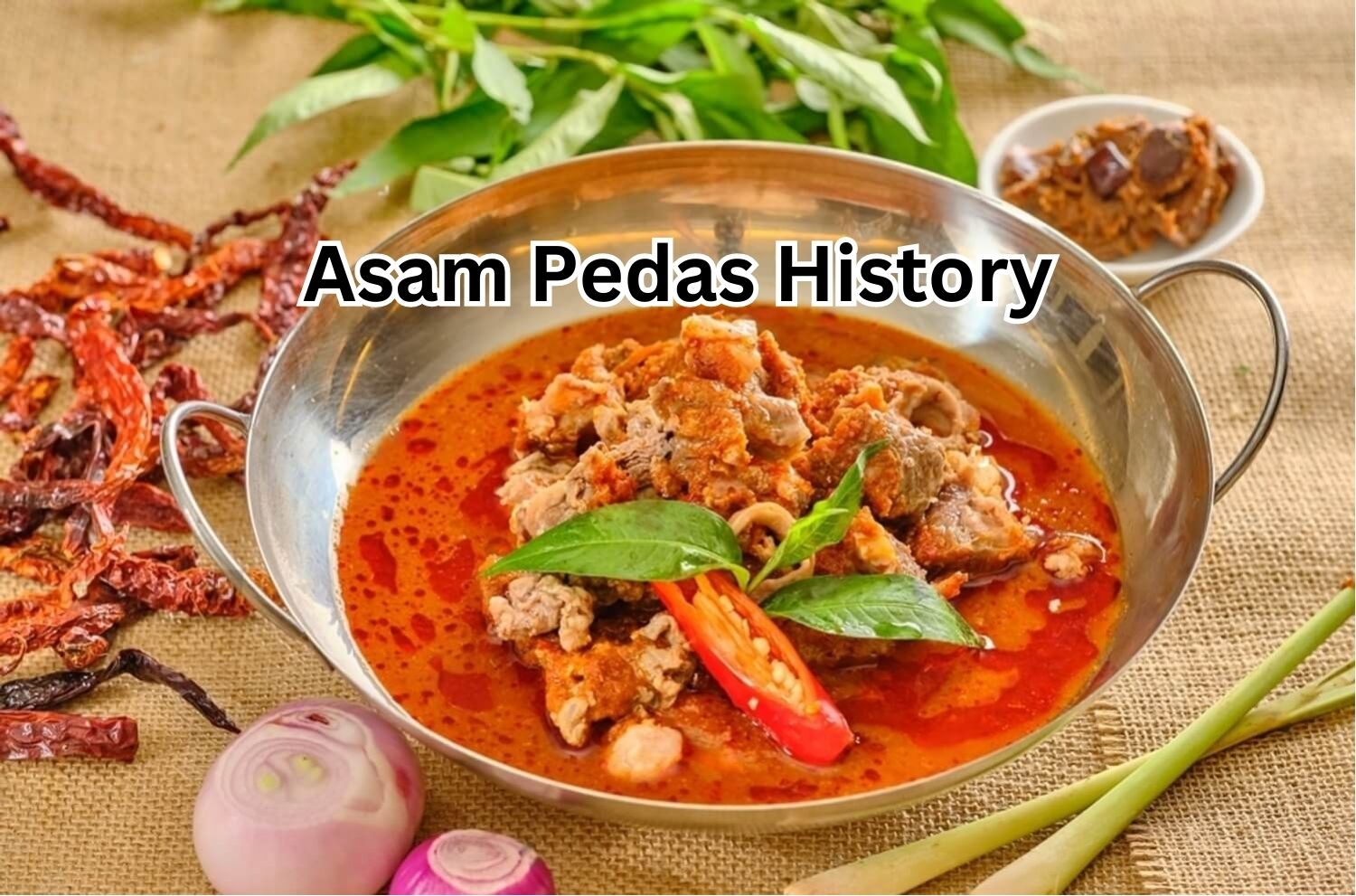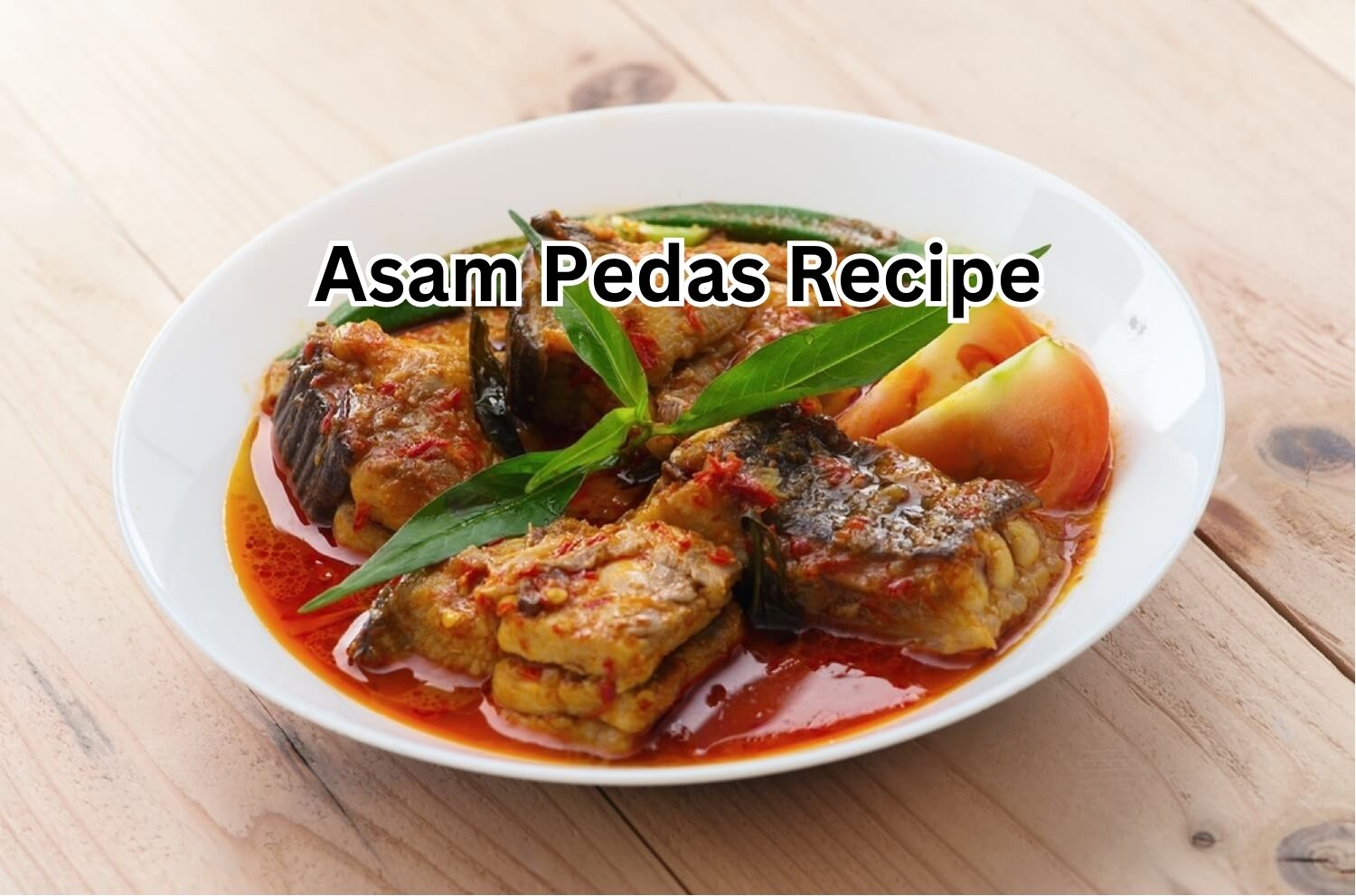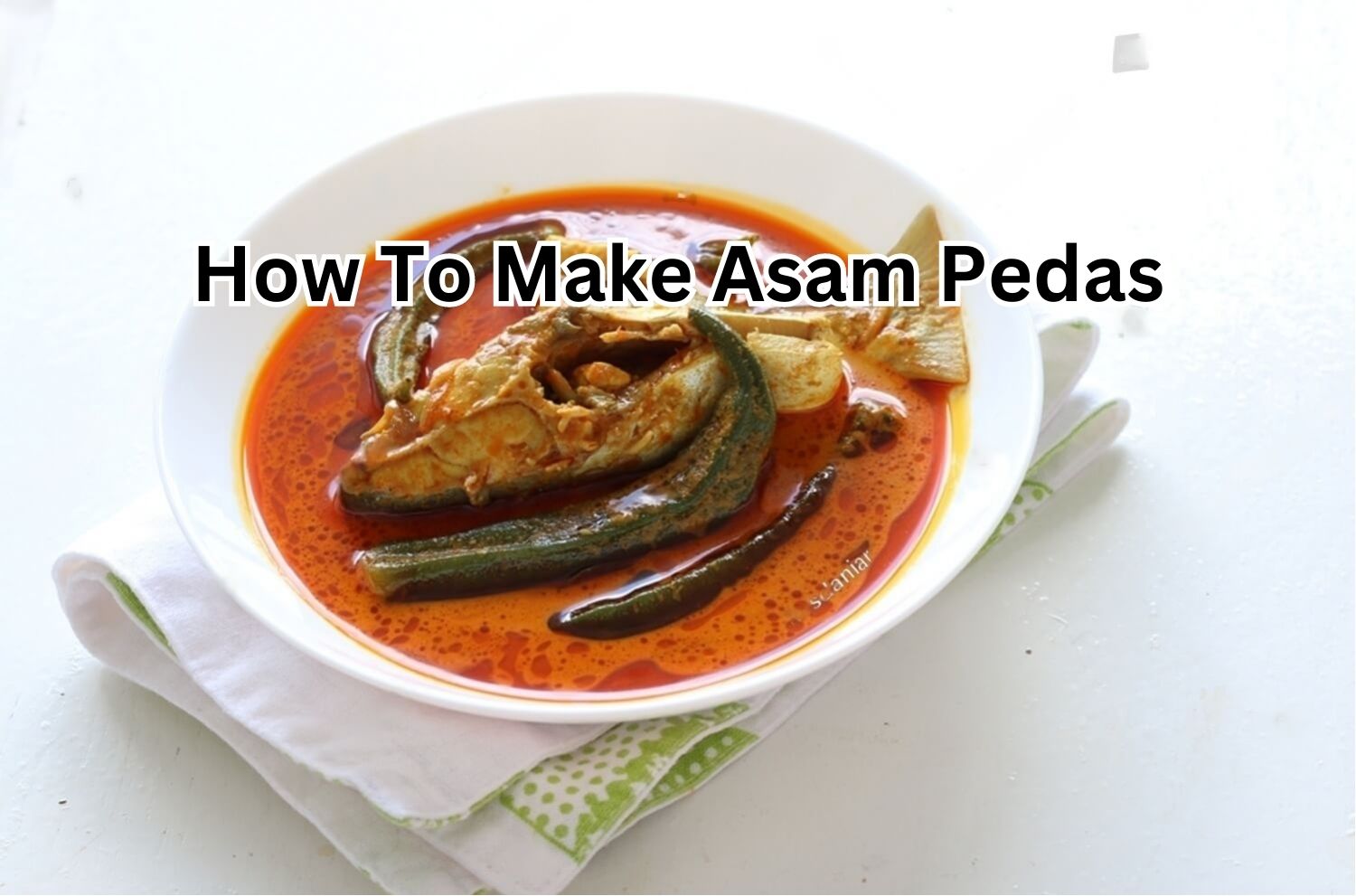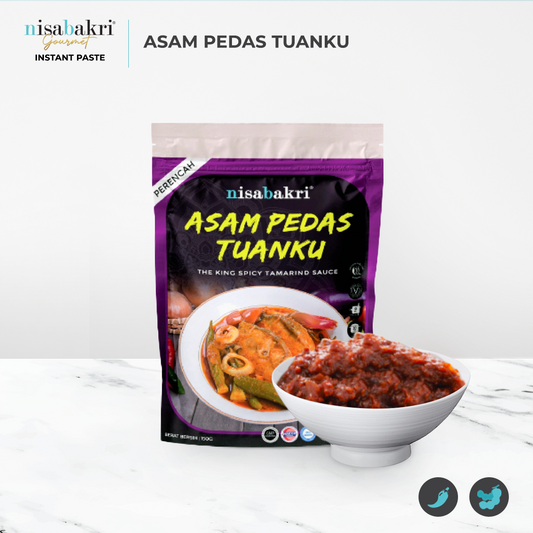Asam Pedas is a flavorful and satisfying dish that is beloved by many Malaysians. Its tangy, spicy taste is a hallmark of traditional Malaysian cuisine, and it is a dish that is sure to please anyone who loves bold, vibrant flavors.

What is Asam Pedas?
Asam Pedas is a sour and spicy dish that is popular in Malaysia, particularly in the state of Malacca. It is made with a souring agent such as tamarind or vinegar, combined with a blend of aromatic spices and chili paste. The dish usually features fish, but can also be made with other types of meat or seafood.
To make Asam Pedas, the ingredients are typically sautéed in a pan before being simmered in the sour and spicy broth. The dish is often served with steamed rice and a side of vegetables or salad.
What is the History and Origins of Asam Pedas?
Asam Pedas is believed to have originated in the state of Malacca, Malaysia, which was an important trading port in the region. The dish is thought to have been influenced by the various cultures and cuisines that passed through the port, including Malay, Chinese, and Indian.
The name "asam pedas" comes from the Malay words for "sour" and "spicy," which are the two dominant flavors in the dish. The sourness is typically achieved using tamarind, which was a common ingredient in many Southeast Asian cuisines.
The spiciness comes from a combination of chili peppers and other aromatic spices, such as ginger, lemongrass, and turmeric. Today, Asam Pedas has become a beloved dish not only in Malaysia, but also in other parts of Southeast Asia and beyond. It is appreciated for its complex and bold flavors, and it is often seen as a symbol of Malaysian cuisine and culture.
What are the Health Benefits of Asam Pedas?
Asam Pedas, made from variety of herbs and spices, can offer several health benefits. Here are a few potential health benefits of Asam Pedas:
Anti-inflammatory properties:
Many of the spices used in Asam Pedas, such as turmeric and ginger, are known for their anti-inflammatory properties.
Antioxidants:
Asam Pedas contains a variety of ingredients that are high in antioxidants, such as tamarind and chili peppers. These compounds can help protect the body against damage from free radicals.
Digestive health:
Some of the herbs and spices in Asam Pedas, such as lemongrass and galangal, have traditionally been used to aid digestion and relieve stomach issues. These ingredients may help reduce bloating, nausea, and other digestive discomfort.
Vitamin C:
Tamarind, one of the key ingredients in Asam Pedas, is high in vitamin C. This nutrient is important for immune system function, skin health, and wound healing.
Popular Asam Pedas Recipe:
Here are three popular Asam Pedas recipes using different types of protein:
Asam Pedas Fish:
Ingredients:
|
500g fish (mackerel or snapper), cut into pieces
|
|
2 tablespoons tamarind paste
|
|
2 cups water
|
|
4 shallots, sliced
|
|
4 cloves garlic, sliced
|
|
1 inch ginger, sliced
|
|
2 stalks lemongrass, bruised
|
|
4-6 dried chili peppers, soaked in hot water
|
|
1 teaspoon salt
|
|
1 tablespoon sugar
|
|
2 tablespoons cooking oil
|
Instructions:
-
In a pot, mix tamarind paste and water together and strain to get the juice.
-
Heat oil in a pan over medium heat, then sauté the shallots, garlic, ginger, and lemongrass until fragrant.
-
Add in the soaked chili peppers and stir for a minute.
-
Pour in the tamarind juice, salt, and sugar, then bring to a boil.
-
Add in the fish pieces and cook for about 10 minutes.
-
Serve hot with steamed rice.
Asam Pedas Chicken:
Ingredients:
|
500g chicken, cut into pieces
|
|
2 tablespoons tamarind paste
|
|
2 cups water
|
|
4 shallots, sliced
|
|
4 cloves garlic, sliced
|
|
1 inch ginger, sliced
|
|
2 stalks lemongrass, bruised
|
|
4-6 dried chili peppers, soaked in hot water
|
|
1 teaspoon salt
|
|
1 tablespoon sugar
|
|
2 tablespoons cooking oil
|
Instructions:
-
In a pot, mix tamarind paste and water together and strain to get the juice.
-
Heat oil in a pan over medium heat, then sauté the shallots, garlic, ginger, and lemongrass until fragrant.
-
Add in the soaked chili peppers and stir for a minute.
-
Pour in the tamarind juice, salt, and sugar, then bring to a boil.
-
Add in the chicken pieces and cook for about 20.
-
Serve hot with steamed rice.
Asam Pedas Prawns:
Ingredients:
|
500g prawns, cleaned and deveined
|
|
2 tablespoons tamarind paste
|
|
2 cups water
|
|
4 shallots, sliced
|
|
4 cloves garlic, sliced
|
|
1 inch ginger, sliced
|
|
2 stalks lemongrass, bruised
|
|
4-6 dried chili peppers, soaked in hot water
|
|
1 teaspoon salt
|
|
1 tablespoon sugar
|
|
2 tablespoons cooking oil
|
Instructions:
-
In a pot, mix tamarind paste and water together and strain to get the juice.
-
Heat oil in a pan over medium heat, then sauté the shallots, garlic, ginger, and lemongrass until fragrant.
-
Add in the soaked chili peppers and stir for a minute.
-
Pour in the tamarind juice, salt, and sugar, then bring to a boil.
-
Add in the prawns and cook for about 3-4 minutes.
-
Serve hot with steamed rice.
What makes the Asam Pedas by Nisabakri Gourmet special?
Nisabakri Gourmet's Asam Pedas is known for its unique blend of traditional and modern flavors. The recipe has been passed down through generations of the Nisabakri family, who have refined it over the years to create a distinctive taste that is loved by many.
One of the key ingredients in Nisabakri Gourmet's Asam Pedas is the use of high-quality fish or seafood, which is carefully selected to ensure freshness and flavor. The fish or seafood is then cooked in a rich and flavorful broth made from a blend of fresh herbs and spices.
In addition to its traditional ingredients, Nisabakri Gourmet's Asam Pedas also incorporates modern elements such as coconut milk, which adds a creamy texture and enhances the overall flavor of the dish. The use of fresh herbs and spices, along with the careful preparation and cooking techniques, also helps to create a depth of flavor that is unique to Nisabakri Gourmet's Asam Pedas.
Nisabakri Gourmet's Asam Pedas is known for its delicious and distinctive taste, which is the result of a carefully crafted recipe that combines traditional and modern elements to create a truly special dish.
Conclusion:
Health benefits of Asam Pedas will depend on the specific recipe and ingredients used, as well as the portion size and frequency of consumption. Adding flavorful and nutritious dishes like Asam Pedas into a balanced diet can be a great way to support overall health and wellbeing. If you want to buy Asam Pedas you can visit https://www.nisabakrigourmet.com/ for best products.
FAQ:
1. What types of fish are typically used in Asam Pedas?
Various types of fish can be used to make Asam Pedas, depending on availability and regional preferences. In Malaysia, some common types of fish used in Asam Pedas include snapper, catfish, and mackerel. Other types of fish, such as pomfret, can also be used.
The type of fish used can affect the overall taste and texture of the dish. For example, mackerel is often preferred for its oily and flavorful flesh, while snapper is a firmer fish that holds its shape well during cooking. The choice of fish can also depend on personal preference and availability in the local market.
2. Can Asam Pedas be made without fish for vegetarian or vegan diets?
Yes, Asam Pedas can be made without fish for vegetarian or vegan diets. In fact, there are many vegetarian and vegan versions of Asam Pedas that use plant-based ingredients instead of fish. To make a vegetarian or vegan Asam Pedas, the fish can be substituted with vegetables such as okra, eggplant, or tofu, or with a combination of vegetables.
The broth can be made using vegetable stock or water, and the sourness can be achieved with tamarind paste or vinegar. The spicy flavor can be added with fresh chili peppers or chili powder.
3. What is the best way to adjust the spiciness level of Asam Pedas?
Adjusting the spiciness level of Asam Pedas can be done by adjusting the amount and type of chili peppers used in the recipe. If you want a less spicy version of Asam Pedas, reduce the amount of chili peppers used in the recipe.
You can also remove the seeds and membranes from the chili peppers, as they contain most of the heat. Instead of using hot chili peppers, you can use milder ones. These peppers are less spicy than jalapeños or Thai chili peppers and can still add some heat to the dish.
4. Are there any health concerns or precautions to consider when consuming Asam Pedas?
Asam Pedas is generally considered a safe and healthy dish to consume, but there are some health concerns and precautions to consider, especially if you have certain health conditions or allergies. Asam Pedas can be quite spicy, which may cause discomfort or heartburn for some people. If you have a sensitive stomach or digestive issues, you may want to reduce the amount of chili peppers or other spicy ingredients used in the recipe.
Asam Pedas may contain ingredients that can cause allergic reactions in some people, such as fish, shellfish, or shrimp paste. If you have any food allergies or sensitivities, make sure to check the ingredients before consuming the dish.









